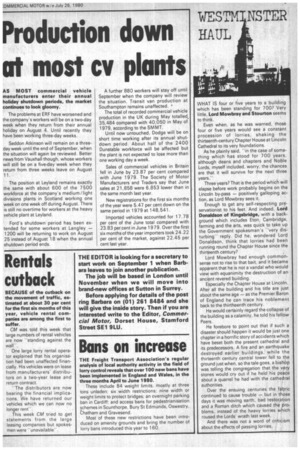WESTM NSTER HAUL
Page 7

If you've noticed an error in this article please click here to report it so we can fix it.
WHAT IS four or five years to a building which has been standing for 700? Very little, Lord Mowbray and Stourton seems to think.
Even when, as he was warned, those four or five years would see a constant procession of lorries, shaking the thirteenth-century Chapter House at Lincoln Cathedral to its very foundations.
As he plainly said, -in the case of something which has stood for 700 years, although deans and chapters and Noble Lords, myself included, worry, the chances are that it will survive for the next three years."
Three years? That is the period which will elapse before work probably begins on the Lincoln by-pass — positively galloping action, as Lord Mowbray sees it.
Enough to get any self-respecting preservationist to his feet. And indeed, Lord Donaldson of Kingsbridge, with a back ground which includes Eton, Cambridge, farming and the arts, was quick to take up the Government spokesman's "very disturbing" reply. Did he, wondered Lord Donaldson, think that lorries had been running round the Chapter House since the thirteenth century?
Lord Mowbray had enough commonsense not to rise to that bait, and it became apparent that he is not a vandal who would view with equanimity the destruction of an ancient revered building.
Especially the Chapter House at Lincoln. After all the building and his title are just about the same age — as the Premier Baron of England he can trace his noblement back to the thirtheenth century.
He would certainly regard the collapse of the building as a calamity, he told his fellow Peers.
He forebore to point out that if such a disaster should happen it would be just one chapter in a horrific story of accidents which have beset both the present cathedral and its predecessors. A fire and an earthquake destroyed earlier buildings, while the thirteenth century central tower fell to the ground just when, so the tale goes, a bishop was telling the congregation that the very stones would cry out if he held his peace about a quarrel he had with the cathedral authorities.
Over the ensuing centuries the fabric continued to cause trouble — but in those days it was moving earth, bad restoration and a Roman ditch which caused the problems, instead of the heavy lorries which roused the Lords' wrath last week.
And there was not a word of criticism about the effects of passing lorries.




















































































































